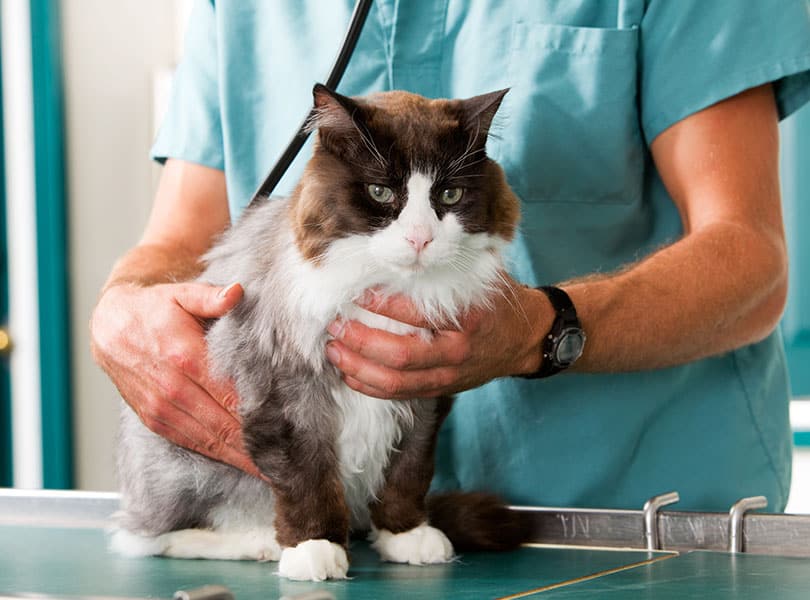Why More Vets Recommend CT Scans For Dogs During Diagnostic Evaluations}
Wiki Article
The Role of Ultrasound and CT Scan in Modern Vet Practices: Insights From Experienced Professionals
In contemporary veterinary practices, ultrasound and CT scans substantially improve analysis capacities. These imaging methods give crucial insights right into animal health and wellness, guiding therapy choices. Experienced professionals recognize the distinct advantages of each method. Ultrasound uses real-time evaluations, while CT checks provide intricate anatomical details. Comprehending their roles and applications increases vital concerns regarding their influence on client outcomes and the future of vet diagnostics. What understandings can be acquired from their integrated usage?Understanding Ultrasound in Vet Medicine
Ultrasound is a necessary analysis device in veterinary medicine, providing a non-invasive approach to visualize internal structures. This imaging method uses high-frequency acoustic waves to create real-time photos of tissues and organs, permitting vets to evaluate problems without surgical intervention. Typical applications consist of assessing the heart, liver, kidneys, and reproductive body organs, as well as keeping an eye on pregnancies.The treatment is fairly quick and can be done in various settings, making it an available alternative for veterinarians. Unlike radiography, ultrasound gives thorough details concerning soft cells and blood circulation, which is crucial for exact diagnoses.Veterinary experts count on ultrasound to find problems such as growths, cysts, and fluid accumulation. Its capability to guide biopsies and other procedures additionally boosts its energy in medical method. By using a safe and effective method to check out internal anatomy, ultrasound has ended up being a cornerstone of modern veterinary diagnostics.
The Benefits of CT Scans for Animal Diagnostics
CT checks offer substantial benefits in vet diagnostics by supplying improved precision in determining inner conditions (Cancer Veterinary Near Me). As a non-invasive imaging technique, they ensure the safety and convenience of animals during assessments. Additionally, CT scans facilitate an extensive assessment of inner frameworks, enabling for much more efficient therapy preparationEnhanced Diagnostic Precision
Advancements in imaging innovation have actually greatly improved analysis accuracy in veterinary medicine, particularly with the use of CT scans. These scans offer detailed cross-sectional pictures of an animal's internal structures, allowing vets to identify irregularities with accuracy. The high resolution and three-dimensional capabilities of CT imaging assist in the discovery of conditions such as tumors, fractures, and internal blood loss that could be missed out on with conventional imaging techniques. Furthermore, CT scans can help in pre-surgical preparation by offering a thorough view of anatomical connections. This degree of information not only improves the accuracy of medical diagnoses yet also help in tailoring reliable therapy plans. As a result, the combination of CT technology into veterinary methods is changing the landscape of pet healthcare, improving end results for individuals.Non-Invasive Imaging Method
The introduction of non-invasive imaging techniques has transformed pet diagnostics, with CT scans emerging as a noticeable device in vet methods. These scans supply high-resolution, cross-sectional pictures of a pet's inner structures, permitting veterinarians to evaluate complex conditions without the demand for intrusive treatments. The advantages of CT scans include their capability to detect growths, fractures, and interior blood loss with impressive accuracy. Furthermore, they assist in the assessment of soft cells and organs, improving diagnostic capacities. The rate of CT scanning makes it possible for fast decision-making, which is crucial in emergency situation situations. By reducing stress and anxiety and pain for the pet, CT scans contribute to a much more humane technique to diagnostics, inevitably improving therapy end results and advancing vet treatment.Comprehensive Internal Evaluation
An extensive inner analysis is important for exact medical diagnosis and effective treatment in veterinary medicine. CT checks deal considerable advantages in this regard, offering detailed cross-sectional photos of an animal's interior structures. This sophisticated imaging technique improves visualization of complicated anatomical areas, allowing veterinarians to recognize problems such as tumors, cracks, and internal bleeding with higher accuracy. In enhancement, CT checks facilitate the assessment of conditions that might be challenging to diagnose via typical techniques. The speed and precision of CT imaging also add to timely interventions, improving person end results. As veterinary techniques increasingly integrate CT technology, the benefits of extensive inner assessments end up being evident, reinforcing the significance of this device in contemporary vet diagnostics.Contrasting Ultrasound and CT Imaging Techniques
While both ultrasound and CT imaging serve crucial duties in vet diagnostics, each strategy provides distinctive advantages and constraints that can affect clinical decision-making. Ultrasound is particularly valued for its real-time imaging abilities, enabling vets to observe dynamic physical processes. This technique is non-invasive, mobile, and does not involve ionizing radiation, making it a much safer option for both pets and clinicians. Ultrasound may have limitations in imagining specific physiological frameworks or deep tissues.Conversely, CT imaging provides in-depth cross-sectional sights of the body, permitting for exact localization of problems. It masters examining complex body organs and frameworks, specifically in the thorax and abdominal area. CT scans call for sedation or anesthesia in several instances and entail direct exposure to ionizing radiation. Inevitably, the choice between ultrasound and CT depends on the particular professional scenario, the area of passion, and the urgency of the analysis requirements.Instance Studies: Successful Diagnoses With Imaging
Study show the substantial enhancements in diagnostic accuracy accomplished through sophisticated imaging technologies like ultrasound and CT scans in vet methods. These advancements not only improve the detection of various conditions but likewise help with effective and timely treatment plans. Assessing particular cases can highlight the transformative influence of these imaging techniques on vet medication.Analysis Precision Improvements

Imaging Innovation Advancements
As vet imaging modern technology remains to advance, its effect on diagnostic capabilities comes to be significantly evident. Current study highlight the effective application of innovative ultrasound and CT check strategies in determining complex conditions. A veterinary center utilized high-resolution CT scans to detect an uncommon kind of lung cancer cells in a pet, which standard imaging had actually missed. Similarly, an ultrasound exam revealed a stomach mass in a feline, triggering timely medical treatment and a positive outcome. These innovations not only enhance analysis accuracy yet additionally enable vets to devise targeted treatment plans. By leveraging sophisticated imaging modern technologies, vet experts are noticeably improving patient treatment, bring about much more reliable management of numerous health conditions in animals.
The Function of Imaging in Emergency Veterinary Treatment
Imaging plays a crucial duty in emergency vet care, supplying veterinarians with essential details required to make quick, educated decisions. In urgent circumstances, methods like ultrasound and CT scans make it possible for practitioners to promptly assess a pet's interior structures, identifying important conditions such as internal bleeding, cracks, or organ abnormalities. These imaging methods enable real-time evaluations, helping with prompt interventions that can be life-saving. As an example, ultrasound is invaluable for reviewing soft cells injuries and conditions like liquid build-up, while CT checks deal comprehensive pictures of intricate anatomical structures, important for detecting injury cases. The rate and accuracy of these imaging techniques improve the vet's capacity to create reliable therapy strategies, ensuring the very best feasible results for their people. The combination of innovative imaging modern technologies into emergency situation vet methods is not just useful however significantly required, as it enhances diagnostic abilities and enhances general animal treatment during important moments.
Training and Experience in Vet Imaging
Advanced imaging strategies such as ultrasound and CT scans are important for effective vet care, the effective implementation of these modern technologies heavily depends on the training and knowledge of vet specialists. Skillful use of imaging devices calls for comprehensive knowledge of composition, pathology, and the principles underlying each technique. Vet specialists should undergo specialized training to properly translate imaging outcomes, which is vital for detecting conditions and planning treatment.Certifications and proceeding education in vet imaging enhance the skills of specialists, allowing them to stay upgraded with technical innovations. Partnership between radiologists and veterinarians typically results in enhanced diagnostic accuracy, as specialists can provide understandings into complicated cases. Furthermore, useful experience in handling imaging tools promotes self-confidence in its application. Eventually, the high quality of vet imaging solutions is straight correlated to the degree of training and proficiency had by the specialists using these essential analysis tools.Future Fads in Diagnostic Imaging for Animals
With the fast improvements in technology, veterinary diagnostic imaging is poised for significant advancement in the coming years. Arising patterns suggest a change in the direction of even more easily accessible and portable imaging modalities, such as handheld ultrasound devices, which can boost area diagnostics. In addition, the assimilation of expert system is anticipated to change photo analysis, permitting for quicker and extra precise analyses of results.Moreover, innovations in 3D imaging strategies and calculated tomography will certainly provide vets with more extensive sights of pet anatomy, resulting in better therapy strategies. Virtual reality modern technology might also play a role in surgical planning and education and learning, giving veterinarians a special point of view on complicated cases.As telemedicine proceeds to expand, remote examinations promoted by diagnostic imaging will come to be extra usual, allowing professionals to aid family doctors in real-time. Generally, these patterns are readied to enhance the efficiency you could look here and efficiency of veterinary care, ultimately enhancing pet results.Regularly Asked Questions
Exactly How Much Do Ultrasound and CT Scans Cost in Vet Centers?
The prices of ultrasound and CT scans in veterinary centers commonly vary from $300 to $1,500, depending on aspects such as place, center type, and specific treatments required for the pet's diagnosis and therapy.
Are There Any Kind Of Risks Connected With Ultrasound and CT Checks for Family Pets?
Ultrasound and CT scans usually position minimal dangers to family pets. Nonetheless, prospective issues consist of sedation responses and exposure to anesthetics. Ultrasound For Dogs. Veterinarians carefully analyze each case to mitigate any risks connected with these analysis proceduresHow Much Time Do Ultrasound and CT Procedures Commonly Take?
Ultrasound procedures generally take around 30 mins to an hour, depending on the intricacy. CT scans, being even more comprehensive, usually call for 30 minutes to 90 mins, consisting of preparation and healing time for the pet.Can All Veterinarians Perform Ultrasounds and CT Scans?
Not all vets can perform ultrasounds and CT scans. Specialized training and accreditation are commonly required to ensure competency in these innovative imaging techniques, which may restrict their availability to vets with added qualifications and sources.What Kinds Of Animals Benefit The Majority Of From These Imaging Techniques?
Specific pet species, especially cats and dogs, benefit considerably from ultrasound and CT scans. These imaging methods improve diagnostic precision for conditions like lumps, inner injuries, and body organ problems, bring about improved treatment end results and client treatment. The high resolution and three-dimensional capabilities of CT imaging facilitate the discovery of problems such as tumors, cracks, and inner blood loss that might be missed out on with standard imaging approaches. Situation research studies highlight the considerable renovations in diagnostic precision accomplished with advanced imaging innovations like ultrasound and CT scans in vet practices. Improving diagnostic precision in vet practices has actually been considerably assisted by developments in imaging technologies such as ultrasound and CT scans. Sophisticated imaging methods such as ultrasound and CT scans are essential about his for effective vet treatment, the effective application of these modern technologies heavily depends on the training and knowledge of veterinary experts. Vet professionals must undergo specialized training to precisely analyze imaging results, which is crucial for identifying problems and planning treatment.Certifications and proceeding education and learning in veterinary imaging enhance the skills of professionals, allowing them to stay upgraded with technological innovations.Report this wiki page